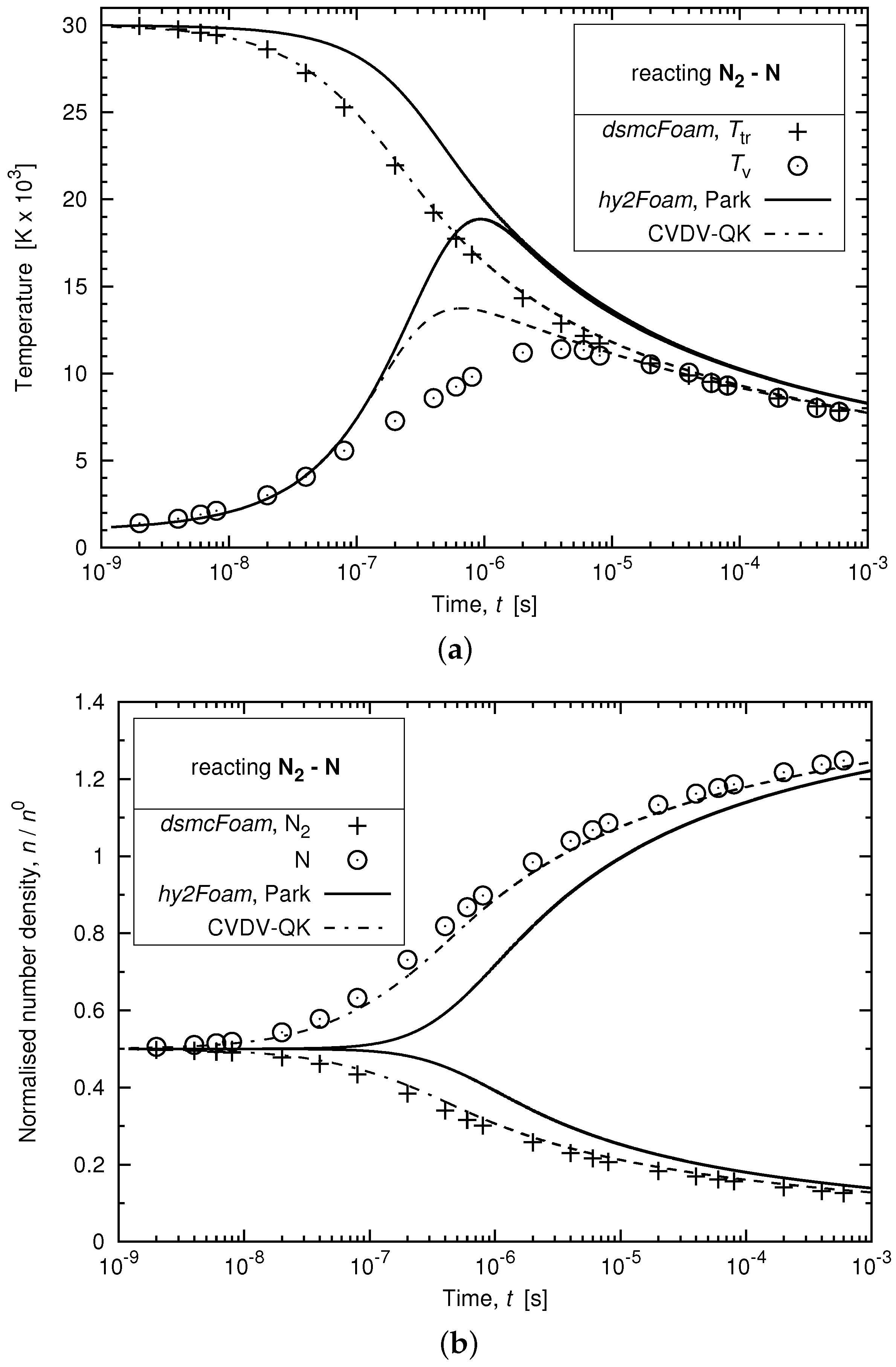☰

Adiabatic heat bath
Zero-dimensional | Thermal non-equilibrium | Chemistry-vibration coupling
![]() Working directory located here.
Working directory located here.
![]() See Section 3.4. Relaxation of a Chemically-Reacting Mixture in
See Section 3.4. Relaxation of a Chemically-Reacting Mixture in
V. Casseau, R. C. Palharini, T. J. Scanlon, and R. E. Brown, "A Two-Temperature Open-Source CFD Model for Hypersonic Reacting Flows, Part One: Zero-Dimensional Analysis," Aerospace, vol. 3, no. 4, p. 34, 2016 [Full HTML→]
1. CASE SETUP
1.1 Mesh
The heat bath is composed of a single cubic cell of length 1 x 10-5 m.
All boundary patches are set to be of empty type.
1.2 Initial conditions
The initial conditions are given in
- p0 = 41,419.4 Pa
- T0tr = 30,000 K
- T0v = 1000 K
- U0 = (0 0 0) m/s
- X0N2 = 0.5
- X0N = 0.5
1.3 Thermo-chemical models
This test case is using the following thermo-chemical models:
- thermally-perfect gas (excluding the electronic energy contribution)
- 1 irreversible reaction (Park 1993)
- two-temperature model
- V—T energy transfer: Landau-Teller, tabulated Millikan-White coefficients, Park’s correction
- chemistry-vibration coupling: Park TTv, preferential model
1.4 Time controls
The time-step is constant and set to 1 x 10-9 s and the simulation stops after 10,000 iterations.
2. RUNNING
The following commands will execute blockMesh, checkMesh and hy2Foam in serial
./Allclean
./Allrun
3. SOLUTION
On the following graphs, the tutorial case results are given by the solid lines:

Influence of the chemistry-vibration model and chemical rate constants on a chemically-reacting N2−N heat bath: (a) temperature versus time, and (b) normalised number density versus time
4. REGRESSION TESTING
Check that the results are matching the solution stored in
./Alltest
Contributor: Dr Vincent Casseau